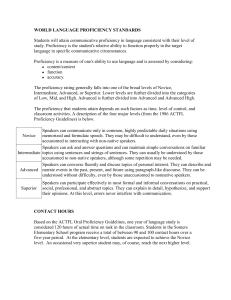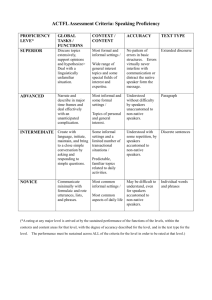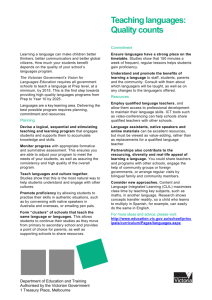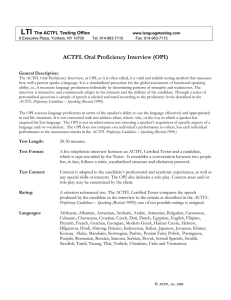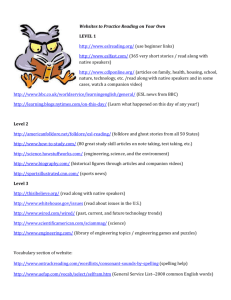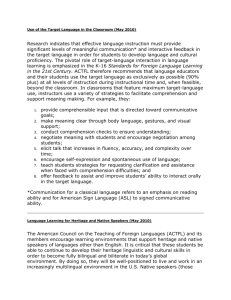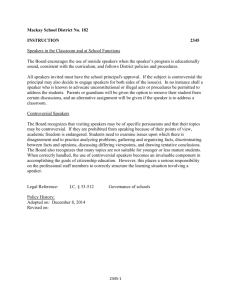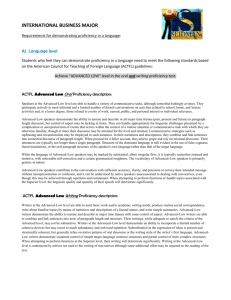Question #1
advertisement
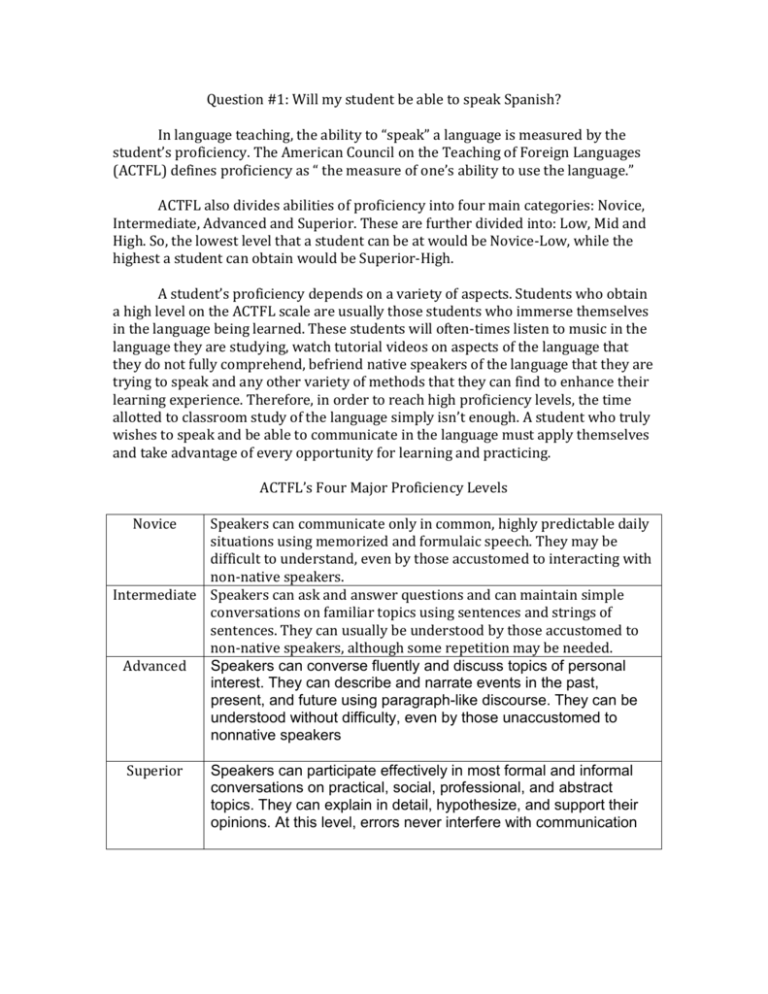
Question #1: Will my student be able to speak Spanish? In language teaching, the ability to “speak” a language is measured by the student’s proficiency. The American Council on the Teaching of Foreign Languages (ACTFL) defines proficiency as “ the measure of one’s ability to use the language.” ACTFL also divides abilities of proficiency into four main categories: Novice, Intermediate, Advanced and Superior. These are further divided into: Low, Mid and High. So, the lowest level that a student can be at would be Novice-Low, while the highest a student can obtain would be Superior-High. A student’s proficiency depends on a variety of aspects. Students who obtain a high level on the ACTFL scale are usually those students who immerse themselves in the language being learned. These students will often-times listen to music in the language they are studying, watch tutorial videos on aspects of the language that they do not fully comprehend, befriend native speakers of the language that they are trying to speak and any other variety of methods that they can find to enhance their learning experience. Therefore, in order to reach high proficiency levels, the time allotted to classroom study of the language simply isn’t enough. A student who truly wishes to speak and be able to communicate in the language must apply themselves and take advantage of every opportunity for learning and practicing. ACTFL’s Four Major Proficiency Levels Novice Speakers can communicate only in common, highly predictable daily situations using memorized and formulaic speech. They may be difficult to understand, even by those accustomed to interacting with non-native speakers. Intermediate Speakers can ask and answer questions and can maintain simple conversations on familiar topics using sentences and strings of sentences. They can usually be understood by those accustomed to non-native speakers, although some repetition may be needed. Speakers can converse fluently and discuss topics of personal Advanced interest. They can describe and narrate events in the past, present, and future using paragraph-like discourse. They can be understood without difficulty, even by those unaccustomed to nonnative speakers Superior Speakers can participate effectively in most formal and informal conversations on practical, social, professional, and abstract topics. They can explain in detail, hypothesize, and support their opinions. At this level, errors never interfere with communication ACTFL’s Oral Proficiency Expectations The following chart outlines on which level an average student should be able to obtain after completing a certain number of year(s) of studying a foreign language in a high school setting without any additional studying or immersion into the language “outside” of the classroom. First Year Second Year Third Year Fourth Year Fifth Year Novice-Mid Intermediate-Low Intermediate Intermediate- High Advanced As one can decipher from the above chart, if a student fails to do any studying, practicing or immersion into the language outside of class/school, after three years of classes, that student will be able to only speak in simple, piecemeal sentences and require much repetition from native speakers when attempting to understand what a native speaker is saying to them.
